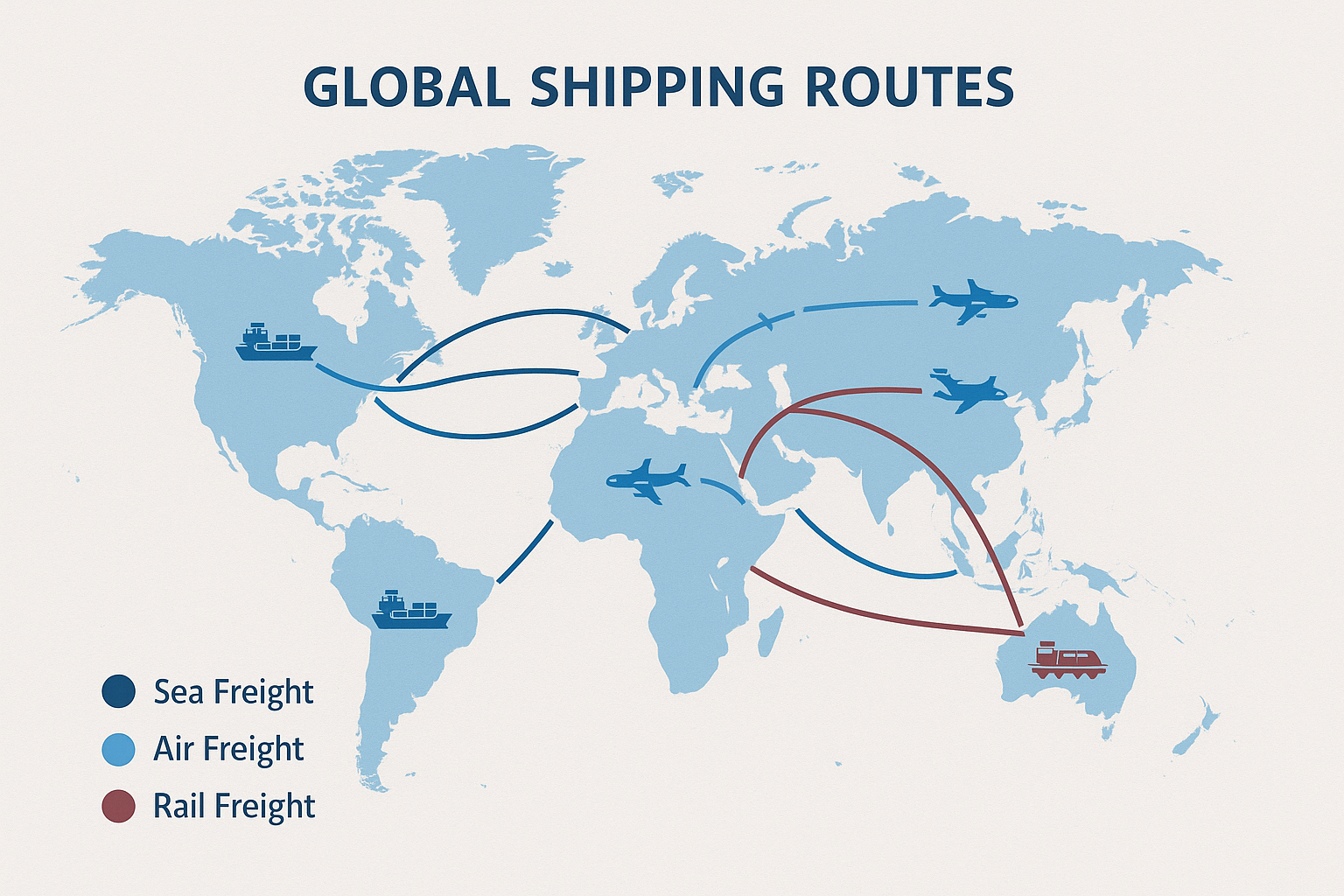Global trade is more complex than ever. Managing warehouses, shipments, and supply chains without modern technology often results in delays, errors, and higher costs. Businesses ask: what is WMS in warehousing and how can it simplify freight forwarding across sea, air, and rail?
A Warehouse Management System (WMS) is the digital backbone of modern logistics. It helps businesses track inventory, automate processes, and reduce errors, ensuring smooth deliveries and optimized costs. Let’s break down its role and practical benefits for your business.

1. Understanding What WMS in Warehousing Means
A Warehouse Management System (WMS) is specialized software designed to manage daily warehouse operations. It covers inventory tracking, receiving, storage, picking, packing, and shipping.
Without a WMS, many companies face issues like misplaced goods, high storage costs, and inaccurate order fulfillment. Implementing WMS reduces human error, ensures real-time visibility, and increases customer satisfaction.
2. Why Manual Warehouse Tracking Costs Your Business Money
- Inaccurate inventory counts lead to missed sales.
- Delays in freight forwarding increase transport costs.
- Overstocking or understocking affects cash flow.
WMS solves these issues by providing real-time data on stock levels and integrating with freight forwarders for faster coordination.
3. How WMS Improves Sea Freight Operations
Sea freight is cost-effective but time-sensitive. A WMS:
- Tracks container loading and unloading.
- Provides accurate customs documentation.
- Prevents delays at ports by sharing real-time updates with freight forwarders.
Sea Freight Example (China → USA):
| Factor | Without WMS | With WMS |
|---|---|---|
| Documentation | Delays due to errors | Automated and error-free |
| Container Tracking | Manual updates | Real-time GPS + digital records |
| Cost Impact | Higher demurrage fees | Reduced port charges |

4. How WMS Reduces Delays in Air Freight
Air freight is expensive but fast. Mistakes cost even more. WMS ensures:
- Faster cargo check-in and customs clearance.
- Automated compliance checks for international shipping.
- Real-time tracking for high-value goods.

5. Rail Freight & WMS: Balancing Speed and Cost
Rail freight is often chosen for China–Europe logistics. WMS supports:
- Consolidated cargo loading to maximize space.
- Route optimization for cost reduction.
- Electronic data exchange for faster customs.

6. Freight Forwarding Costs & Time: With vs. Without WMS
| Shipping Mode | Average Cost (per 40ft container) | Average Transit Time | Savings with WMS |
|---|---|---|---|
| Sea Freight | $2,000 – $4,000 | 25–40 days | Up to 12% |
| Air Freight | $6,000 – $12,000 | 3–7 days | Up to 15% |
| Rail Freight | $4,000 – $6,500 | 14–20 days | Up to 10% |

7. Choosing the Right WMS for Your Business
When selecting a WMS:
- Ensure integration with freight forwarding platforms.
- Check cloud vs. on-premise solutions based on budget.
- Prioritize multi-language and multi-currency support for international trade.
8. Reducing Risks with WMS in Customs Clearance
One of the biggest challenges in global trade is customs clearance. Incorrect paperwork delays shipments. WMS helps by:
- Generating automated documents.
- Reducing the risk of compliance penalties.
- Ensuring end-to-end visibility in customs.
9. Practical Tips to Cut Freight Costs Using WMS
- Consolidate shipments across multiple orders.
- Optimize packaging to reduce container space.
- Use predictive analytics in WMS to forecast demand and avoid last-minute air freight.
10.Conclusion: Making WMS Work for Your Supply Chain
Request a Quote
Need a tailored solution for your shipping from China?
Let TJ China Freight Forwarder assist you with reliable, cost-effective service.
FAQ:
Q1.What is WMS in warehousing and why is it important?
It’s warehouse management software that improves accuracy, lowers costs, and speeds up freight operations.
Q2.How does WMS lower shipping costs in sea freight?
By automating documents and tracking containers, WMS prevents delays and costly port fees.
Q3.Can WMS be used for both air and rail freight logistics?
Yes. It integrates with forwarders for sea, air, and rail, ensuring smooth cargo flow.
Q4.Does implementing a WMS require high investment?
Initial costs vary, but savings on delays, storage, and customs often pay back within 12–18 months.
Q5.How does WMS help with customs documentation?
It auto-generates bills of lading and invoices, reducing errors and clearance delays.
